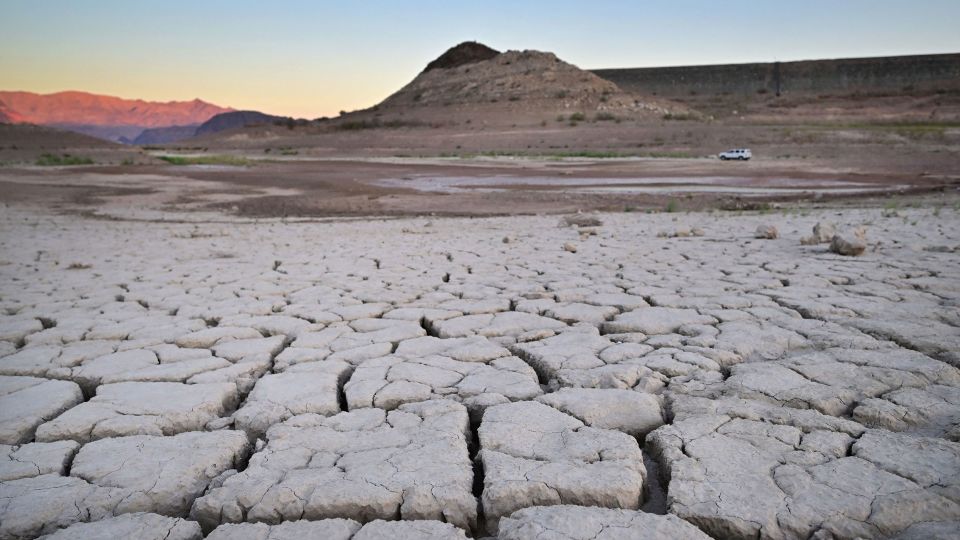Colorado River on “Brink of Disaster”
Published on CNN.com as ‘The brink of disaster’: 2023 is a critical year for the Colorado River as reservoirs sink toward ‘dead pool’
Deep uncertainty looms over the Colorado River and the 40 million people who depend on it for their water supply as the basin enters a critical year that could determine its future stability.
Plagued by decades of overuse and human-caused climate change, demand for the river’s water has vastly outpaced its supply. In 2023, federal and state officials must find a way to keep as much as 4 million acre-feet of water in Lakes Mead and Powell – 30% of what the Colorado River states have historically used.
Failing to do so means either of these lakes, the largest manmade reservoirs in the country, could reach “dead pool” in the next two years, where the water level is too low to flow through the dams and downstream to the communities and farmers that need it.
The cuts that are needed are on an unprecedented scale, and officials will be fighting an uphill battle against a deep, multi-year drought to get them done. State officials tried drastic measures to cut their usage this year, but the river’s continued decline was an alarming reality check.
Western state officials wrote a letter in May agreeing to leave 1 million acre-feet of water in Lake Powell. Then, they watched as the same amount of water disappeared due to system losses and evaporation.
“Everything we tried to do through the May 3 letter was wiped out by mother nature,” top Arizona water official Tom Buschatzke told CNN. “We have to understand that could happen to us again. It’s been happening to us almost every year for the past few years.”
Bureau of Reclamation Commissioner Camille Touton recently gave states a January 31 deadline to figure out a way cut their usage voluntarily. If they can’t do it on their own, top federal water officials have said they would step in and make mandatory cuts to save the system.
Experts told CNN that even with a good winter and spring runoff season, water managers still need to plan for the worst-case scenario.
“You can’t live with no water in the reservoirs hoping for good years; you need to refill the system,” Eric Kuhn, former manager of the Colorado River Water Conservation District, told CNN. “People realize that you can’t live on the brink of disaster.”
The looming battle

Anxiety is growing in the West as reservoir levels plummet. Negotiations between the states on voluntary water cuts have been tense and closely watched, particularly between the Lower Basin states of California, Arizona and Nevada.
Those talks have stalled amid disagreement on how much water each state should sacrifice and how much money farmers, tribal nations and cities should be paid to reduce their water consumption.
State negotiators are themselves waiting for the feds to decide how it will dole out $4 billion in drought relief money, which the Biden administration fronted from the Inflation Reduction Act to essentially pay people to not use water.
“I would not say it has put anything on hold,” Buschatzke told CNN.
But, he says, “it makes it a little more difficult because of the uncertainty and not knowing” what the difference will be between the money the federal government is offering, and the voluntary cuts districts are willing to make.
Other important deals have been struck. In November, the Biden administration pledged to spend millions of federal dollars to help restore California’s endangered Salton Sea – a key demand from the powerful Imperial Irrigation district in Southern California. With that funding, other states like Arizona are hoping Imperial and other California water users agree to put more cuts on the table.
There is also a distinct possibility that the federal government will step in if voluntary cuts don’t come close to what’s needed. But that plan would almost assuredly be greeted with a court challenge.
Sarah Porter, the director of the Kyl Center for Water Policy at Arizona State University, told CNN that federal officials are working carefully to prepare for the possibility that they would be sued over mandatory cuts, “so they can demonstrate it’s not an arbitrary action.”
At a December conference of Colorado River water users, Assistant Secretary of the Department of the Interior Tanya Trujillo addressed that likelihood, according to Porter.
“She said, ‘We know we’ll be sued,’” Porter said.
Can’t bank on the weather

While West Coast states have seen a boon in precipitation in recent weeks – California snowpack is running around 150% of average so far this winter – the weather over the Colorado River Basin in the Intermountain West has been less wet. Snowpack in parts of the upper basin in Utah and Colorado is slightly above average, but lower basin mountains have seen below-average snow.
Overall, the outlook from the National Weather Service’s River Forecast Center for the Colorado River Basin suggest springtime snow melt will be close to average.
But what the river basin needs is weeks of above-average snowfall, which melts in the spring and runs downstream to replenish the reservoirs. And ultimately, the Colorado River cannot be saved by the occasional wet winter amid growing, longterm drought.
“This one good year is not enough to alleviate the stress on the Colorado River,” said Paul Miller, a hydrologist at the River Forecast Office. “It’s going to take multiple of these consecutive above-average years to fill a lot of the major reservoirs, especially Lake Powell.”


And human-caused climate change is “almost certainly” going to make dry years worse, said Isla Simpson, climate scientist with the National Center for Atmospheric Research.
Since the 1980’s, the Southwest region has seen a steady decline in precipitation. Simpson, who co-leads a federal task force on drought, said decades-long lack of rain and a rise in planet-heating emissions have worsened the conditions.
Dry air evaporates water from the soil during extended periods of heat. This is another reason water shortages are plaguing the Colorado River; not only is there enough rain to fill reservoirs, but the air also sucks up water from what’s left of them.
“We need to be very concerned about the future of the Colorado River,” Simpson said.
There’s also a high chance that the lack of rain and low snowpack aren’t going away anytime soon, she said. La Niña is expected to persist through the winter, which typically causes the jet stream – upper-level winds that carry storms around the globe – to shift northward. That means less rainfall for a region that desperately needs it.
All of this means that even if there’s good snowpack this winter, the Colorado River’s existential problems are far from solved.
“One good year doesn’t fix us – even a couple of good years doesn’t fix us,” Buschatzke said. “We’ve got to rebuild that bank account.”

